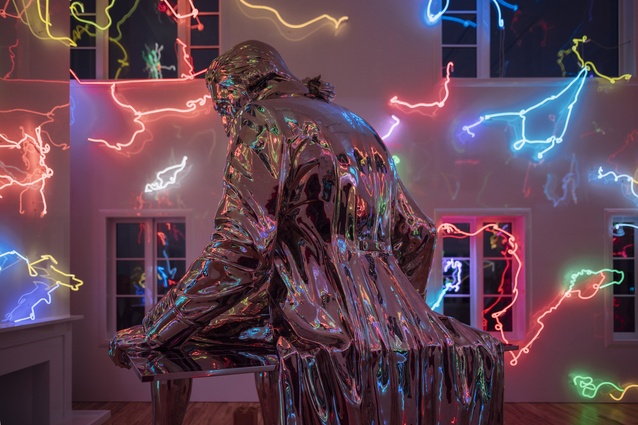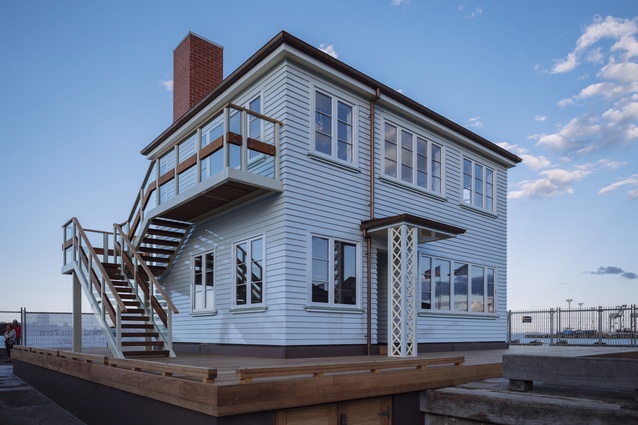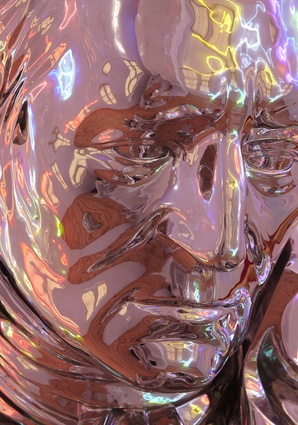Opinion: Michael Parekowhai’s The Lighthouse
I’m coming at this sort of neat. I understand there’s been a lot of scrapping about it, but I haven’t seen that. I’ve just seen the work. It is awe full and wonderful.
It looks like a state house. It’s not a state house. Ceci n’est pas une pipe: the treachery of images.
It looks familiar, generic. A bit close to our hearts, a bit nostalgic, a bit sad, a bit hopeful, a bit gentrified, a bit poor. A bit banal, even, sorry; decking boards, a glass handrail – I kind of want to puke. At least it’s painted the best colours.
And copper spouting; ooh, that must’ve been expensive. This must be one of those Point Chev ones then, eh? Poor people can’t afford copper, can’t afford the Chev either. So where did the poor people go? Speaking of which, where did the land go?
Oh, this is all so precarious. Wobbling on the end of the Queen’s own wharf. Water under our feet. Changeable and vicious and peaceful. Turn around and cling to the land. Claw with your eyes for purchase on solid ground. What bastion did you find? Oh, not so stable eh…
This is just the beginning, but already it is confusing and confronting and ugly-beautiful and the adrenaline is high. When we’re making our own work, I’m often hoping that we’ll disrupt the tropes just enough to break that thing where your brain categorises everything into subsets of things it already knows. Roof, wall, door, window, weatherboard, flashing, nail, house.
The shorthand of looking that precludes seeing. I often wish we could make buildings that transcend those things, that refuse its visitor that shortcut, that do that funny thing to your insides that comes when you encounter something once familiar and indecipherable and exquisite. Buildings that give you no choice but to gorge on everything you are seeing, smelling, touching, hearing. Buildings that throw you wide open to the world, like a pupil colliding with pure black, crushing its shocked, pretty iris back to nothing.
That’s what wonder is. The awe full moment of realising who and what and where and why and how we are. That’s what The Lighthouse is.
The house is the ruse. It’s all glossy and watery and over water, but it’s just a house and you know what that is, so maybe you didn’t notice yet how slippery this all is. Its windows are glowing, blinking, crazy. A kind of stunted and demented and brothel-y but sort of gentle lighthouse. Go and look inside it. That should come naturally; perving into other people’s houses is your new rugby.
There is not a house in there. Almost everything is gone. Evacuated. Evicted. A bit of floor. You creeping, peering in the window on the other side. Just space, mainly. Just a heap of potential. Just a whole universe and a whole people and a whole complex, beautiful, terrible, wonderful, awe full vision of what we have become. Just a white, glossy, self-reflecting, edgeless, nothing-everything, scribbled and scratched and ghosted with a thousand constellations written in a child’s scrawl or an adult’s Twombly; and all in neon in all these colours, and it’s blinking on and off here and then there and then red and then pink, and in the middle is Captain Cook, only it’s not because he’s dead and so, who is this?
This is not that man. This is not a man. This thing is twice as big as me. And he’s made of metal and no man is made of metal. Obvs. He – it’s – precarious on the edge of an artist’s benchy thing. Can’t touch the floor. Can’t plant his feet. Unstable. Can he do this? Should he do this? Did he want to do this? Did he regret it? Do I? How can I? This is no place for statue. And no way for a statue to behave. No place for the man to whom you owe your existence. And I mine. This is no place for a statue. Statues plant their feet upon ground in the sky, like angels.
Cook. Heroic of scale, pensive of posture, evasive of surface. He’s Koons chromium glossy sextoy infinite reflective. Like Fomison’s Christ, I can’t tell if the whole universe is gathering into his body or he’s dissolving into nothing. The birth of a nation, the death of something else. This is not Captain Cook. Of course it’s Captain Cook, but how do I know what that dead navigator looked like? Immediately I am certain that his huge face is just someone else’s face, the butcher down the road, whatever. He might as well have been me. Or you.
We are all implicated in this place. Don’t you dare turn your back.
This is a place made of unfamiliar things made to look like familiar things, scarcely containing almost everything. This is a place where it’s what on the inside that counts. This is a place of wonder, in a city with too little, in a land with so much.
It was very brave, to make this humble little enormous thing. I am so very grateful. Go and see it. If you were angry about it before, I hope it makes you angrier.












